Yakushima Island (屋久島) is in Japan’s southernmost prefecture of Kagoshima. It’s part of an archipelago of the Ōsumi Islands. Yakushima itself is almost 195 square miles in size with a population of over 13,000 people. Not only is it home to six large mountains, but it’s also home to Japan’s oldest cedar trees.
The area has a history of almost 17,000 years old with a diversity of wildlife and nature preservation amid humid tropical climates and famous hot springs.
This magical and remote place is one of the most picturesque in Japan and, arguably, on earth. It’s a tourist’s paradise for photos, beauty, and absolute oneness with nature.
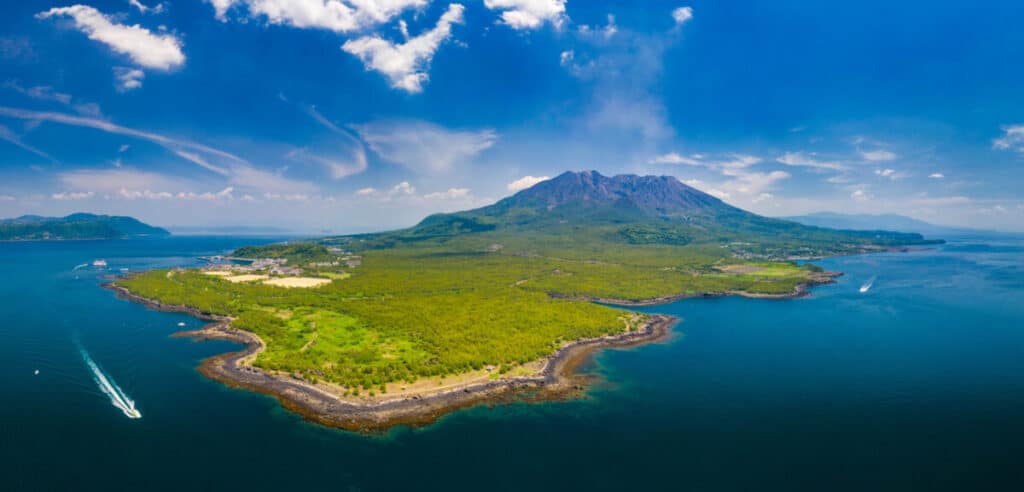
Quick Overview
- The General Geography of Yakushima – this includes the island’s size and shape along with its impressive mountains and waterways, like the various available hot springs
- The Vast ; Massive Forest Ranges on Yakushima – involving all the diverse wildlife and famous, ancient trees along with their history of forestry and logging
- General Climate ; Weather on Yakushima – experience summer and winter at the same time in the middle of autumn or spring in addition to recent problems with pollution
- History ; Demographics of the Native Population – people have settled on Yakushima since Japan’s Jōmon period about 2,300 years ago
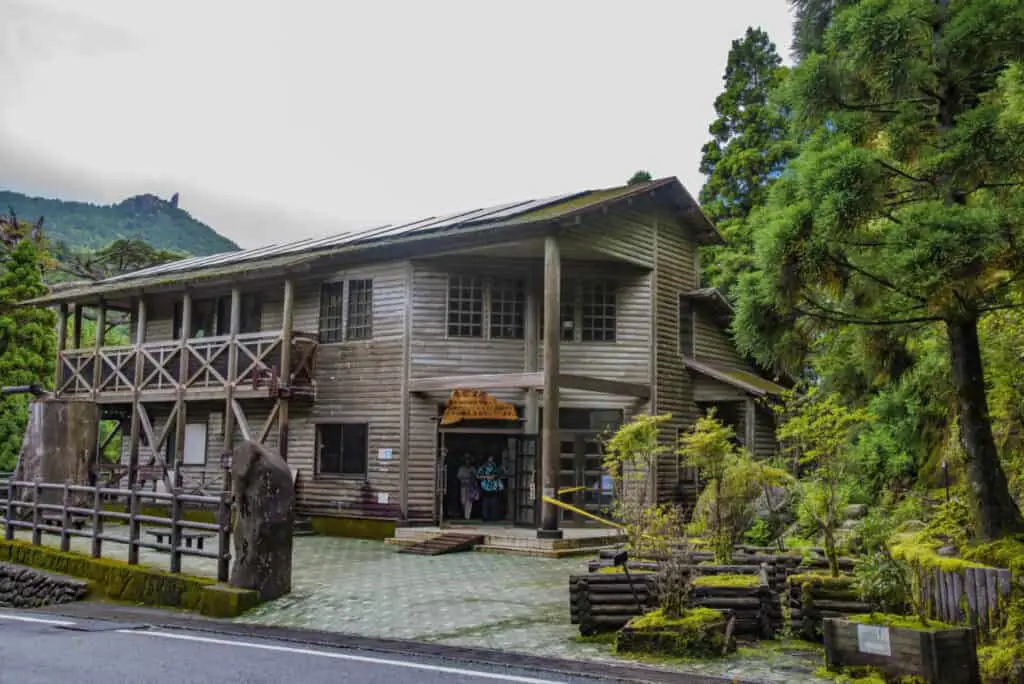
The General Geography of Yakushima
This circular-shaped island has a total of almost 195 square miles (504½ square kilometers) with a circumference of 55 miles (89 kilometers) and a diameter of 17 miles (28 kilometers).
It sits about 38 miles (just under 61½ kilometers) south of the southernmost tip of the Ōsumi Peninsula in Kyushu and 73 miles (135 kilometers) south of Kagoshima.
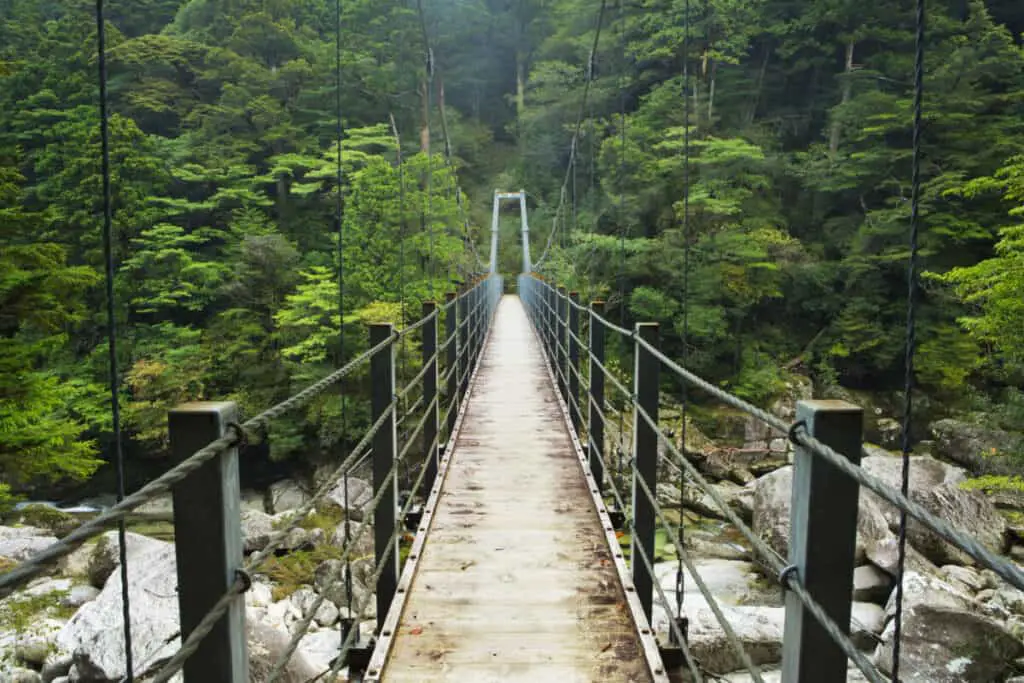
Mountainous Areas
Yakushima’s two highest points are on Miyanouradake with a height of 6,348 feet (1,935 meters) and Nagatadake, coming in at 6,188 feet (1,856 meters) above sea level.
There are some 30 total mountain peaks extending over 3,300 feet (1,000 meters) tall. This includes Mitake, Miyanoura, Nagata, and Kurio mountains.
Waterways And Composition
It contains the Yakushima Kaikyō, or Vincennes Strait, which connects it to the nearby island of Tanegashima. Here is where they launch rockets from Japan’s Space Center.
There’s also the Yodo and Awa Rivers along with the Ooko and Senpiro waterfalls.
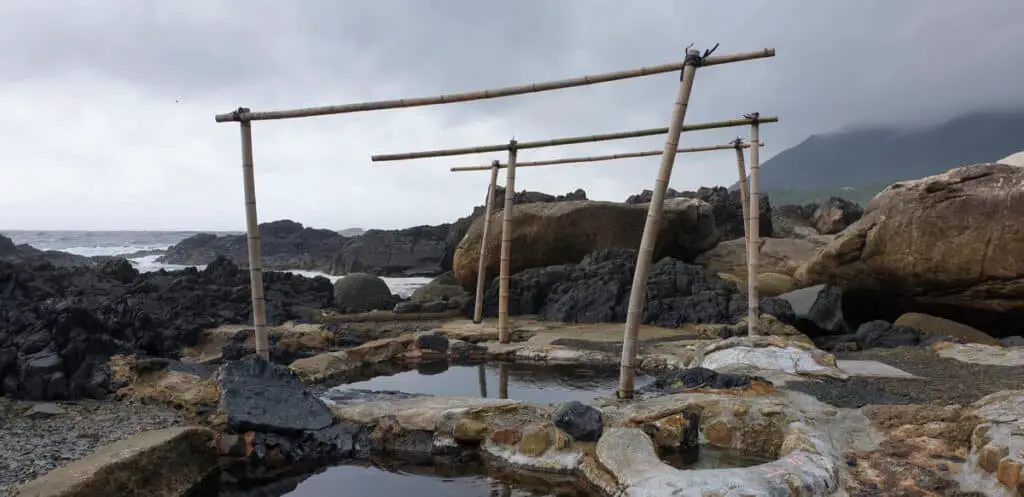
The island is a pure bedrock of granite with some sandy areas and has no active volcanoes. Yet there are hosts of hot springs, called “onsen,” throughout Yakushima. Some of the more popular ones are:
- Hirauchi Underwater Hot Spring: This is a subterranean type of hot spring that offers an honor payment system to help maintain the site. The required standard attire is completely nude.
- Jomon no Yado Manten: A beautiful and scenic hot spring that offers healing and relaxation.
- Onoma Onsen: A small hot spring owned by JR Hotels, it costs about 200 yen to use.
- Oura Onsen: Another small hot spring frequented mostly by locals.
- Yudomari Onsen: This is a larger pool for a hot spring that divides. One side is for the men while the other is for the women.
- Yunoko no Yu: This is a municipal bath dedicated to health and healing, where outpatients come to relax and recoup.
The Vast And Massive Forest Ranges on Yakushima
Yakushima has one of the largest and most vast acreages of evergreen forests in a subtropical region. It’s also a vast nature preserve that’s home to macaque monkeys, sika deer, and raccoon dogs, among many others.
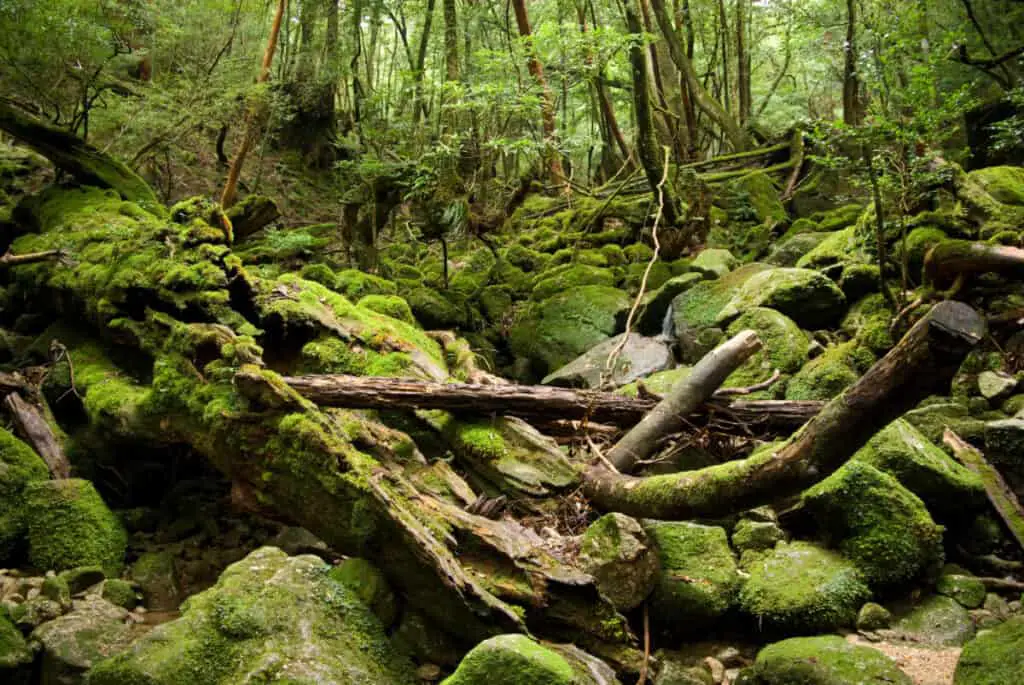
It’s also the largest nesting ground for dolphins and the endangered loggerhead turtle.
What’s more, there are over 50 varieties of rare flowers, most of which are endemic. This includes things like rhododendrons and Bryophyta.
Yaku Sugi Cedar Trees
Famous for its rich vegetation, Yakushima’s main symbols are the Yaku Sugi cedar trees. These are 1,000 years old or older and grow in areas covered in clouds and mist.
These trees will sometimes have extended roots and stalks that twist themselves into strange and unusual figures.
The oldest known Yaku Sugi cedar tree is situated at an altitude of 1,350 meters. Called the Jōmon Sugi, there are claims that it’s the largest and oldest in the world, with its discovery being surprisingly as recent as 1996.
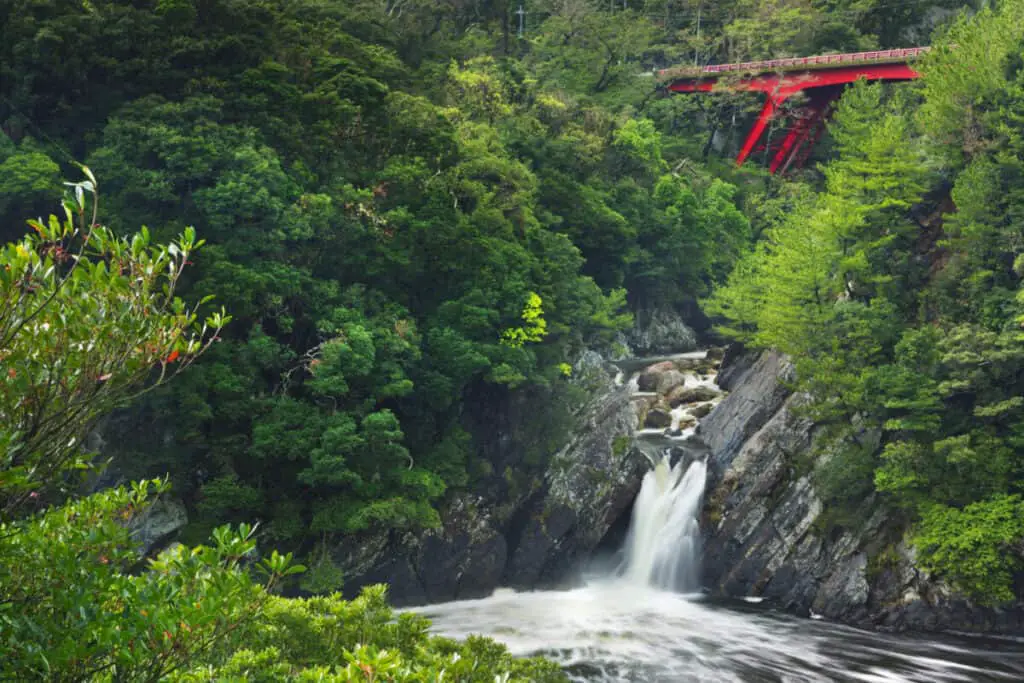
While its exact age is unknown, some estimate it to be anywhere from 2,170 to 7,200 years old.
It gets its name from the Jōmon period of the country’s history, which is about 2,300 years ago. This is the same time that people began populating and settling in the area as their permanent home.
Classic White Pines
But cedars aren’t the only symbol of the island’s natural beauty. The white pines are also a gorgeous sight to behold. White pines, or Yakutanegoyo, are a species of evergreen that only grow in the wild of Yakushima’s forests.
These also are in danger due to excessive logging efforts after World War II. Less than 2,000 white pines remain and don’t receive the same protections as the Yaku Sugis do.
They only grow at an elevation between 300 meters and 1,000 meters amid rocky cliffs and rubble-covered ridges.

White pines tend to grow slower than black or red pines and can only flourish in areas where there aren’t any other plants to invade the space.
When other plants blow in and root, this further decreases their ability to survive. If an invasive species take over, the conditions will favor the other plants over the white pines.
History of Logging And Forestry
During the early Edo period, the cedar and other evergreens were heavily logged and deforested. This practice didn’t end until the 1960s.
Ever since, conservation efforts and laws help to not only protect the pristine, primary nature of the area but also replant and reseed the region.
General Climate And Weather of Yakushima
The thing that makes the beauty of Yakushima possible is a large amount of rain that occurs all year long.
In fact, Yakushima is Japan’s rainiest region with almost 10 inches (250 millimeters) of rain each month and as much as 30 inches (773 millimeters) just in June.
Annually, Yakushima receives 160 to 390 inches (4,000 to 10,000 millimeters) of rain.
Yakushima Airport Official Website
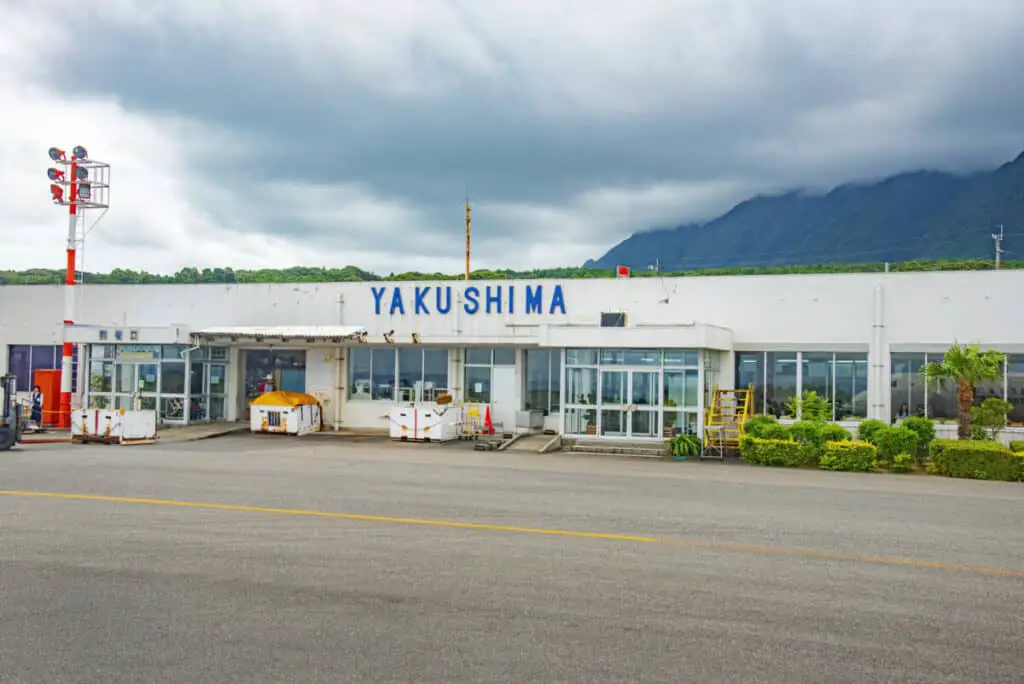
There’s actually a popular saying among the locals and those who frequent the area: it rains 35 days per month on the island of Yakushima.
While it does tend to be drier in autumn and winter, spring and summer are notorious for the massive amounts of rainfall. However, this rainy season will often produce devastating landslides.
Winter And Summer at Once
Another interesting aspect of Yakushima’s climate and environment is its ability to have snowcapped mountains with the nearby ocean temperature never reaching much lower than 66°F (19°C).
This means you can experience winter in summer and spring in autumn.
Yakushsima Iwasaki Hotel Official Website
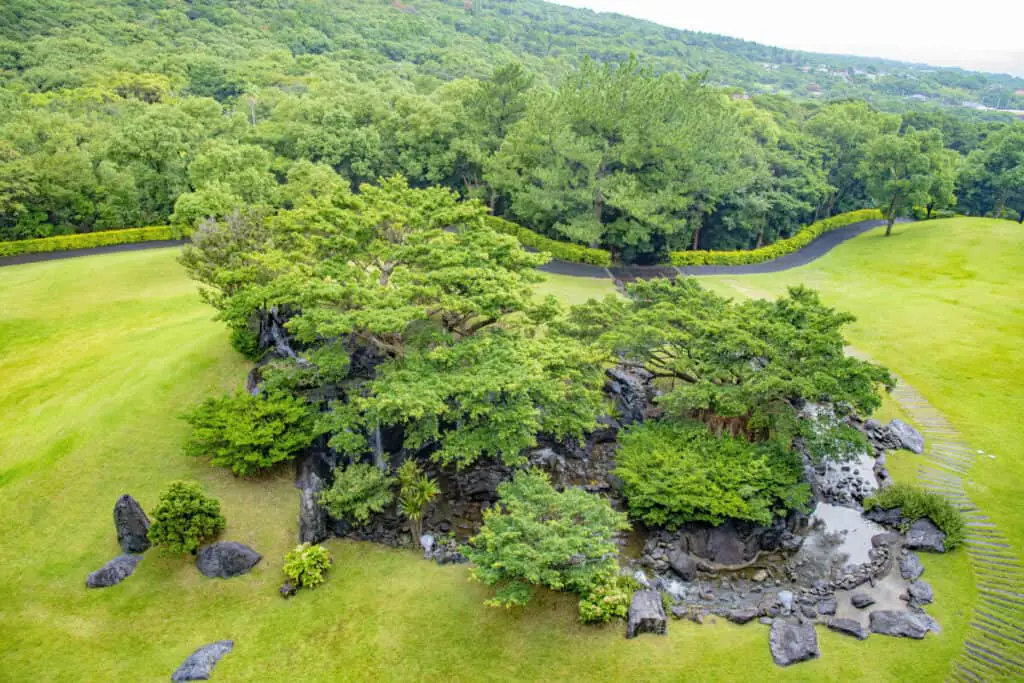
Pollution from China
While this is a heavily protected nature area and deemed a UNESCO world heritage site, there are claims that the area receives significant air pollution from nearby China.
The pollution is airborne and wafts into the nature preserve, collected by the surrounding fauna and flora.
A 2009 environmental survey shows evidence of increasing air pollution covering the island that not only affects all the trees but also shifts water quality and impacts wildlife.
History And The Demographics of the Native Population
The first recorded documentation of people settling on Yakushima comes from 702 CE in the Japanese Shoku Nihongi and the 6th-century writings from the Sui Dynasty of China.
There are many subsequent diary entries from travelers during China’s Tang Dynasty and Japan’s Nara period.
During Japan’s Edo period, it was under the reign of the Shimazu clan of the Satsuma Domain, a shogun warrior tribe. After the Meiji Restoration, the island became part of Kagoshima Prefecture.
Population
In 1960, the island reached its highest population count, being over 24,000 inhabitants.
But, it seemed that popularity waned throughout the years until about 1995. However, the population has stabilized since with a solid 13,000 residents.
Yakushima Island Tours Via Tripadvisor
Sources of Revenue
Until recently, their main product was forestry and wood products along with commercial fishing operations. But their main sources of income have turned to things like tea cultivation, orange farming, and the production of Shōchū.
This is a distilled rice spirit that includes things like barley, buckwheat, sweet potatoes, or brown sugar.










